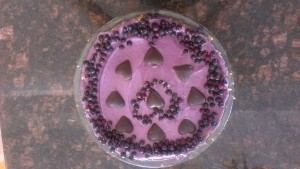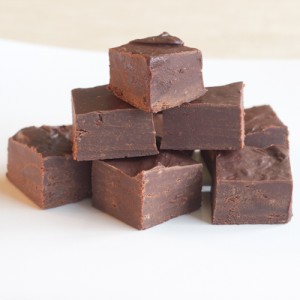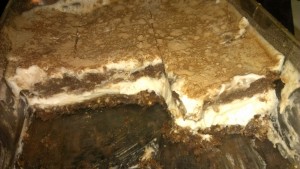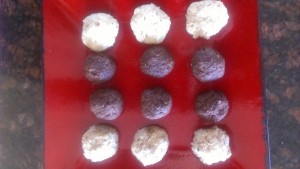High fructose consumption causes rapid, extensive liver damage even without weight gain
Living in USA, we are exposed to high fructose corn syrup everywhere. Why do all soft drinks, most cereals, breads, cookies, cakes, ice cream the list goes on… contain so much high fructose corn syrup instead of sugar? It is cheaper and companies make more money but what effect has so much concentrated high fructose corn syrup on the body?
The medical profession has overlooked some major pathological effects of fructose consumption and its effects on liver function. Regardless of whether or not a person gains weight from it, consuming fructose was recently shown by researchers from Wake Forest Baptist Medical Center in North Carolina to cause hepatic steatosis, a non-alcoholic form of fatty liver disease that in some patients can lead to cirrhosis.
Published in the American Journal of Clinical Nutrition (AJCN), their study found that, by itself, fructose can trigger rapid liver damage even when all other factors remain equal. In other words, a relatively skinny person can sustain extensive liver damage from fructose consumption, even if he or she doesn’t become obese from it. Fructose consumers also have an exceptional propensity toward developing diabetes, according to the data.In one study, scientists gave two groups of monkeys an all-you-can-eat buffet for seven years. The target group was given access to low-fat foods with added fructose, while the control group was given access only to low-fat, low-fructose foods. All other factors remained equal, and the animals were given equal access to whatever quantities of food they desired.
During the evaluative period, monkeys in the fructose group were observed to gain about 50 percent more weight than the control group. They also developed diabetes at three times the rate of the control group as well as severe cases of hepatic steatosis that were clearly unique to fructose consumption.
Fructose shown to damage intestinal flora, cause gut leakage
In order to verify that fructose itself, and not some combination of fructose and weight gain, was responsible for the high rates of liver damage, the researchers took 10 middle-aged, normal-weight monkeys who had never before consumed fructose and divided them into two comparable groups.
For a course of six weeks, one group was fed a calorie-controlled diet containing 24 percent fructose while the other group was fed a calorie-controlled diet containing a negligible amount of fructose, or about 0.5 percent. Both groups were given an equal amount of fat, carbohydrates and protein, but from varying sources.
What they found is that not only did fructose directly harm the monkeys’ livers, but it also altered the bacterial composition of their guts. In essence, fructose was found to cause intestinal microflora to leak from the intestines, enter the bloodstream and damage the liver — and at a rate of up to 30 percent higher compared to the monkeys that consumed almost no fructose.
“High added sugars caused bacteria to exit the intestines, go into the blood stream and damage the liver,” wrote the authors. “The liver damage began even in the absence of weight gain. This could have clinical implications because most doctors and scientists have thought that it was the fat in and around tissues in the body that caused the health problems.”
In order to avoid high fructose consumption start reading labels, avoid any foods which contain high fructose corn syrup or fructose and trust me its in almost all processed foods. Try cooking from scratch and if you need to use a sweetener try using raw honey, coconut sugar, stevia, erythritol, or xylitol.
Sources for this article include:
http://science.naturalnews.com
Monthly Archives: August 2014
Raw Blueberry cheesecake
Raw Blueberry cheesecake
Crust
- 1 cup walnuts
- 1 cup pine nuts
- ½ cup pitted dates
- ½ cup unsweetened coconut
Filling
- 3 ½ cups cashews (soaked 2 hours and drained)
- 2 cups fresh or frozen blueberries
- ¾ cup fresh lemon juice
- ¾ cup raw unfiltered honey
- ¾ cup raw coconut butter
- ¼ vanilla bean or 1teaspoon pure vanilla extract
- ½ teaspoon Celtic or Himalayan salt
Directions
We have made this dairyless cheesecake with blueberries, but I see no reason you couldn’t make it using strawberries, or raspberries, or mango, or possibly some other fruit.
Making the Crust
Place all crust ingredients except coconut in food processor with “S” blade and process until crumbly. Sprinkle coconut onto the base of a spring form pan, pie plate, or 8×8 square Pyrex (coconut keeps dough from sticking). Press mix evenly into pan to form a crust.
Prepare the Filling
Place all filling ingredients in a powerful blender like a Vita-Mix (Most regular blenders won’t be able to process this filling. You could use a food processor, but it won’t make it as creamy.) Blend until smooth and creamy.
Pour onto crust, tapping to remove bubbles, and make sure pie plate is filled evenly.
Cover and place in freezer until firm.
When firm, if using a spring-form pan, remove and place on a serving plate before cutting slices and return leftover to freezer.
Coconut Dark chocolate Fudge
Coconut Dark chocolate Fudge
1. Easy Non Raw Version
1 can of extra thick coconut cream (I use trader Joes 13.5 oz), ½ cup of sugar (I like to use coconut Sugar), ¼ coconut oil, 2 (12 oz) packages of semisweet chocolate chips.
Place coconut cream, coconut oil and sugar in Sauce pan and simmer over medium heat. Take of the burner and add in chocolate chips and stir until everything is melted. Use an electric blender on med high for 3 min to mix it all up. Pour in pan (line with parchment paper or aluminum foil for easy removal of fudge) and sprinkle with toasted coconut flakes. Refrigerate until firm or at least for 8 hours and cut into 36 small pieces (mine are big pieces so it’s more like 18)
2. Healthiest Raw Version
I am passionate to make desert as healthy as I can make them without losing the amazing taste, So instead of using the chocolate chips, I melt raw cacao butter and mix it with raw cacao powder and raw agave and vanilla extract or powder. I think the fudge tastier and much higher in antioxidants…
Peanut or Almond Butter Variation
Add a layer of Peanut butter or almond butter between the fudge
I used peanut butter, raw cashews, and raw honey and a little of water and made it creamy in Vitamix.
Raw Tiramisu cake
Raw Tiramisu cake
1.5 cups almonds (soaked overnight, or for a minimum of 3 hours)
2 cups of cashews (soaked overnight, or for a minimum of 3hours)
Vanilla extract
1/2 cup of dates (soaked for 1 hours min)
2 Ts coconut oil
coconut meat (I used soaked shredded coconut)
husk or lecithin (optional)
raw cacao powder
raw carob or some instant coffee
himalayan salt
First you need to make Cashew Milk: in a blender, put 1 cup of soaked cashews and 3 cups of water, add a good ts of vanilla extract, a pinch of salt. Blend and then pour in a sieve over a bowl so you can get the milk. Set aside.
Then you need to make the cake, and you will need to use your food processor for this: put 1/2 cup of soaked dates, 1 cup of soaked cashews and 1.5 cup of soaked almonds, 1 Ts of coconut oil, 2Ts Raw cacao powder and 1Ts carob powder, 2 Ts maple syrup (it’s not raw but together with the carob powder it gives a little bit of a coffee taste, I used some organic instant coffee), 1 ts vanilla. Process until it forms a sticky paste. Then, make the cream! In the Blender, pour 2 cups of cashew milk and 1 cup of coconut meat. As I didn’t have a real coconut, I soaked shredded coconut in water for about 1 hour and that was my coconut meat! I also add about 1 cup of soaked cashews, 1 Ts of raw honey and 1Ts coconut oil. As an option, depending on how firm you want the cream, you can add some husk or lecithin to the mixture. Blend and set aside.
Finally you need to make layers in a cake pan: put one layer of cake… top it with one layer of cream. Put in the freezer until it’s hard. Then you can spread another layer of cake followed by the rest of the cream. Put a bit of cacao powder or carob powder on top and put the whole in your fridge for 2 hours or so (until the 2 bottom layers soften).
Raw Chocolate Macaroons
Raw Chocolate Macaroons
- 1 cup almond flour (or ½ cup raw almonds)
- 2 cups dried organic unsweetened coconut flakes
- 1 1/4 cups raw cacao powder (or carob powder if you don’t want to use cacao)
- 1 cup maple syrup, agave or raw honey
- 1/3 cup coconut butter (you can substitute with coconut oil or I have left it out before too)
- 2 teaspoons pure vanilla extract
- Pinch of sea salt
If you are using raw almonds instead of almond flour, place them in the bowl of a food processor and grind them until they are very finely chopped. Or if you make your own almond milk you can dehydrate the left over almond.
Add the coconut to the ground almonds or almond flour, along coconut butter, maple syrup (or your choice of sweetener, vanilla extract and pinch of salt. Process until the mixture is well blended but still has plenty of texture.
Form mixture into balls and place the macaroons on a cooling rack and dehydrate for a few hours – depending on your preferred texture. You can also refrigerate them until they are firm.
Raw Chocolate Covering
Melt raw cacao butter in double boiler (not over 112 F), add raw agave, maple syrup, or sweetener of your choice and raw Cacao powder and stir until everything is melted and mixed. Pour over the coconut macaroons and refrigerate and ENJOY! (If you don’t have much time or have no raw ingredients, you can melt dark chocolate chips, add a little coconut cream to it and use that as the chocolate cover)
Variations:
For Chocolate Orange Macaroons: add 2 teaspoons of finely grated orange zest.
For lemon or orange scented macaroons: add 1 ½ teaspoons grated lemon or orange zest to the mixture.
Raw Thai Wraps
Thai Wraps
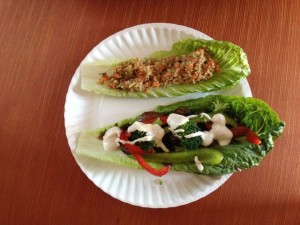 2 cups walnuts
2 cups walnuts
½ cup carrots, diced
½ cup zucchini, diced
½ cup Champignon mushrooms, diced
½ cup red bell pepper, diced
½ cup fresh cilantro, minced
½ cup scallions, minced (greens only)
Sauce:
½ cup raw wild honey
¼ cup nama shoyu or Braggs amino acid
1 clove garlic, minced
2 teaspoons fresh ginger, grated
2 Tablespoons sesame seeds, hulled
2 Tablespoons sesame Oil
2 teaspoons red pepper flakes
Garnish:
1 head of lettuce, Butter, Bib, or Romaine, 2 cups mung bean sprouts optional, 1 carrot
Gently pull-apart lettuce leaves wash and let dry on paper towel. Prepare the sauce in a food processor fitted with an s-blade by adding all ingredients and pulsing 3-4 times. Add walnuts to the processor and pulse 4-5 times until meat of walnut mimics consistency of ground meat. Then add diced vegetables to processor and pulse 3-4 more times until all ingredients are incorporated. Place 2-3 lettuce leaves on plate, scoop 2-3 tablespoons of walnut meat mixture onto each leaf. Garnish with mung beans, and grated carrot.
Are all Calories equal? Important things to know if you want to loose weight!
A Calorie is Not a Calorie
Eat less than you burn and you’ll lose weight – it’s preached as the “be all, end all” of weight loss and it’s completely WRONG.
Truth is, the number of calories you eat is not the only factor that affects your body composition. In fact, there are at least 5 other factors that need to be considered, including:
1.The thermic effect of the food ingested. The thermic effect of food (TEF) measures the amount of energy that is required to support the processes of digesting, absorbing, and assimilating food nutrients as well as the energy expended as a result of the central nervous system’s stimulatory effect on metabolism when food is ingested. Of the three macronutrients, protein carries the highest thermic effect.
2. The fiber content of the food ingested. Due to its chemical makeup, fiber is classified as a carbohydrate; however, it is unlike other carbohydrates in that it is a mostly indigestible nutrient. Even though each gram of fiber contains four calories, these calories will remain undigested and will not be absorbed. Therefore, if one were to consume 300 calories of red beans (a food in which nearly 1/3 of the caloric content is from fiber), approximately 100 of these calories would pass through the intestinal tract undigested.
3. The glycemic and insulin index of the food ingested. The glycemic and insulin index are scaled numbers that refer to how quickly a particular carbohydrate source enters the bloodstream as sugar and how much insulin is needed to rid that sugar from the bloodstream, respectively. Generally speaking, there is a positive relationship between the two; that is, the quicker sugar enters the bloodstream, the more insulin is needed to rid that sugar from the bloodstream. When high levels of insulin are present within the blood, fat burning is brought to a screeching halt, which is anything but desirable for those whose goal is just that.
4. The macronutrients present in the food ingested. Although insulin’s primary function is to shuttle glucose (sugar) into skeletal muscle, it also carries many other nutrients to their respective storage sites; this includes fat. Since carbohydrate ingestion stimulates a large insulin response and fat ingestion gives rise to blood lipid levels, the two, when consumed together in high levels (especially in the absence of protein), promote the greatest fat storage.
5. The timing of the meals ingested meals. Ingesting a large amount of carbohydrates before bed spikes insulin, sabotages overnight fat burning, and increases fat storage during sleep. On the contrary, consuming a great deal of calories early in the day does not bring about this problem; rather, these calories are likely to be used as energy to support daily activities.
As you can see, someone could be eating a relatively small amount of calories daily, but at the same time promoting a great deal of fat storage by:
1) making poor food choices
2) eating carbs and fat together in large amounts without protein, and
3) consuming meals at inopportune times
Information from Joel Marion & Josh Bezoni Founders of BioTrust Nutrition.
Benefits and How do do Super Slow Weight Training
Super Slow Weight Training
By slowing your movements down, you’re actually turning them into high intensity exercise. The super-slow movement allows your muscle, at the microscopic level, to access the maximum number of cross-bridges between the protein filaments that produce movement in the muscle. You can perform the super-slow technique with many of the strength training exercises already discussed, such as hand weights, resistance machines, bodyweight exercises, or resistance bands.
You only need about 12 to 15 minutes of super-slow strength training once a week to achieve the same HGH production as you would from 20 minutes of sprints on the bike, treadmill, or bike.
The key to making this work for you is intensity, which needs to be high enough that you reach muscle fatigue. If you’ve selected the appropriate weight for your strength and fitness level, your goal is to have enough weight that you cannot do more than 12 reps but at least 6 repetitions.
As a guideline, when you start out, allow your body at least two days to rest, recover and repair between high-intensity sessions, and do not exercise the same muscle groups each time.
How to Perform the Super-Slow Technique
I recommend using four or five basic compound movements for your super-slow (high intensity) exercise set. Compound movements are movements that require the coordination of several muscle groups—for example, squats, chest presses, pull downs, push press, and rows.
- Begin by lifting the weight as slowly and gradually as you can. One version is to do a four-second positive and a four-second negative, meaning it takes four seconds to bring the weight up, and another four seconds to lower it.
- Repeat until exhaustion, which should be around four to eight reps. Once you reach exhaustion, don’t try to heave or jerk the weight to get one last repetition in. Instead, just keep trying to produce the movement, even if it’s not “going” anywhere, for another five seconds or so. If you’re using the appropriate amount of weight or resistance, you’ll be able to perform four to eight reps
- Immediately switch to the next exercise for the next target muscle group.
Dietary Guidelines for Maintaining Healthy Brain Function and Avoiding Alzheimer’s Disease
Dietary Guidelines for Maintaining Healthy Brain Function and Avoiding Alzheimer’s Disease
It’s becoming increasingly clear that the same pathological process that leads to insulin resistance and type 2 diabetes may also hold true for your brain. As you over-indulge on sugar and grains, your brain becomes overwhelmed by the consistently high levels of glucose and insulin that blunts its insulin signaling, leading to impairments in your thinking and memory abilities, eventually causing permanent brain damage.
Additionally, when your liver is busy processing fructose (which your liver turns into fat), it severely hampers its ability to make cholesterol, an essential building block of your brain that is crucial for optimal brain function. Indeed, mounting evidence supports the notion that significantly reducing fructose consumption is a very important step for preventing Alzheimer’s disease.
Because of the very limited treatments, and no available cure as of yet, you’re really left with just one solid solution, and that is to prevent Alzheimer’s from happening to you in the first place. Dr. David Perlmutter, the author of the book Grain Brain, explains that Alzheimer’s is a disease predicated primarily on lifestyle choices; the two main culprits being excessive sugar and gluten consumption.
- Avoid sugar and refined fructose. Ideally, you’ll want to keep your total sugar and fructose below 25 grams per day, or as low as 15 grams per day if you have insulin resistance or any related disorders. In one recent animal study, a junk food diet high in sugar resulted in impaired memory after just one week! As a general rule, you’ll want to keep your fasting insulin levels below 3, and this is indirectly related to fructose, as it will clearly lead to insulin resistance.
- Avoid gluten and casein (primarily wheat and pasteurized dairy, but not dairy fat, such as butter). Research shows that your blood-brain barrier, the barrier that keeps things out of your brain where they don’t belong, is negatively affected by gluten. Gluten also makes your gut more permeable, which allows proteins to get into your bloodstream, where they don’t belong. That then sensitizes your immune system and promotes inflammation and autoimmunity, both of which play a role in the development of Alzheimer’s.
- Eat a nutritious diet, rich in folate, such as the one described in my nutrition plan. Vegetables, without question, are your best form of folate, and we should all eat plenty of fresh raw veggies every day. Avoid supplements like folic acid, which is the inferior synthetic version of folate.
- Increase consumption of all healthful fats, including animal-based omega-3. Beneficial health-promoting fats that your brain needs for optimal function include organic butter from raw milk, clarified butter called ghee, organic grass fed raw butter, olives, organic virgin olive oil and coconut oil, nuts like pecans and macadamia, free-range eggs, wild Alaskan salmon, and avocado. Also make sure you’re getting enough animal-based omega-3 fats, such as krill oil. High intake of the omega-3 fats EPA and DHA help by preventing cell damage caused by Alzheimer’s disease, thereby slowing down its progression, and lowering your risk of developing the disorder.
- Optimize your gut flora by regularly eating fermented foods or taking a high-potency and high-quality probiotic supplement
- Eat blueberries. Wild blueberries, which have high anthocyanin and antioxidant content, are known to guard against Alzheimer’s and other neurological diseases.
Source: Dr. Mercola.com
